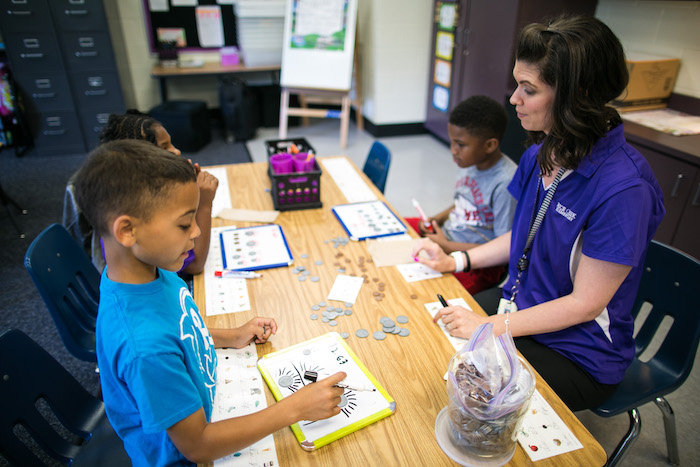Every teacher knows that their job is to ensure that students gain as much as possible from each lesson. However, how can you ensure that every single lesson plan is working to its fullest extent? Let’s take a closer look at formative assessment and how it can help your students to achieve highly.
What is formative assessment?
According to a vast number of studies, formative assessment is the single most important classroom strategy when it comes to boosting learning gains. However, what exactly is formative assessment? What does it look like in practice?
Formative assessment is a way of interactively checking student understanding and progress. Carried out on a regular basis, it helps to inform your future planning as an instructor. It identifies learning needs so that teaching can be appropriately adjusted.
The differences between summative assessment and formative assessment
All teachers are aware of the importance of summative assessment. This is a way of evaluating student progress according to certain benchmarks. However, formative assessment is very different. It continuously monitors the understanding of students. This ensures that teachers are aware of each student’s strengths and weaknesses as they learn. It even helps the students to measure their own aptitude. It also allows teachers to make improvements to their instruction so that their delivery becomes more effective.

How is formative assessment administered?
There are several ways of administering a formative assessment. While you can use an exam format, there are other options available, too. Known as AFA strategies (or alternative formative assessment strategies), these are usually much simpler than a formal quiz. Even so, they are equally important in a classroom environment and can be quickly used to test learning.
Observation lies at the heart of the majority of AFA strategies. When students work in small groups or pairs, observing and noting their discussions can be highly beneficial. This allows teachers to instantly spot students who are struggling to grasp certain concepts and gives the opportunity to provide instant corrective feedback.
How to integrate AFA strategies into your classroom
It can seem intimidating at first to integrate AFA strategies into your everyday classroom practice. The key is to begin gradually, running alternative formative assessment alongside traditional assessments.
Begin by walking your students through the basics, discussing your expectations as soon as you introduce a new assignment. You should learn how to score the assessments yourself before introducing your class gradually to the concept of self-evaluation. Peer response is an important element of AFA strategies. However, students need to learn how to give relevant feedback to each other. This can be a steep learning curve, and working on it slowly over time is the best approach to ensure that your students don’t become overwhelmed.
Teaching your class how to evaluate their own performance is vital if your AFA strategies are to be successful. Students are used to teachers telling them where their weaknesses lie and what they could improve. Asking them to pinpoint their own shortcomings can be challenging. There are, however, a few simple evaluative prompts that can point your students in the right direction. Here are some basic questions that will encourage effective self-assessment:
- How much effort and time did you dedicate to this task?
- What do you feel your weaknesses and strengths were during this task?
- How could you improve your assignment?
- What did you learn from your assignment?
As a teacher, you should adopt the role of a facilitator, helping your students to evaluate their own performance objectively. As a result, their accountability, self-esteem, and self-confidence will all receive a valuable boost.

Useful classroom strategies to check for understanding
Although it may seem alien at first to introduce the concept of AFA strategies into your learning environment, it will soon become second nature. You will also discover that you benefit greatly from introducing formative assessment into your classroom. Not only will you be able to build an immediate snapshot of each student’s level of understanding, but you’ll also be able to tailor your subsequent lesson plans to fill the learning gaps that you have identified. Here are some useful strategies that you can use that will check the understanding of your lesson plans:
Creating their own quizzes
Ask your students to invent their own quizzes to test their fellow classmates about their understanding of the content of your lesson. Ask each student to write ten questions relating to what they learned and then swap them with another student who will write comprehensive answers.
Making opinion charts
Create a large-scale T-chart in which students can list their individual opinions about the lesson content in the left-hand column and then support those opinions using the right-hand column. Not only does this demonstrate the students’ understanding of your lesson plan, but it also encourages them to think more broadly about the subject matter and to use a broader range of thinking skills.
Writing an intrigue journal
Creating intrigue journals for each student is a great way of quickly discovering what students have taken from each lesson. In the journal, they can list the most resonant, controversial, or interesting ideas that they derived from your teaching. Have them back up each idea by a brief rationale of around 100 words so that you can see the reasons behind their choices.
Just five words
A useful formative assessment technique that’s accessible to anyone is the “just five words” strategy. Students are simply required to jot down five words to sum up their key takeaway from the lesson. You can then ask them to explain or justify their choices in a class follow-up session. As part of this strategy, you may also want to introduce the “muddy moment” concept. This allows students to jot down the things that confused them most about the lesson. This helps you to immediately spot any points that need further clarification so you can address them early on.
The three-two-one technique
Regardless of the subject matter, the three-two-one technique allows any teacher to pinpoint learning strengths and weaknesses in their cohort. At the end of each lesson, have students jot down three things that they learned, two interesting facts that they discovered, and a question that still remains unanswered. This formative assessment strategy enables students to clarify their learning and to raise questions without any worries. It also allows teachers to see which points (if any) require further elaboration in the upcoming lesson.
You have mail
A fun way to carry out formative assessment involves students writing a single question about the topic that they’ve been studying on an envelope. They then write the answer on a piece of paper and stick it inside the envelope. The envelopes are then swapped between classmates. Every learner reads the question and writes their own response to it on their own piece of paper. They then read the answer inside the envelope before putting their own answer slip inside. Once the envelopes have been passed around the classroom, they are then returned to the teacher’s desk. The teacher then acts as a facilitator for a class discussion, reading each question and the various answers to it in turn.
Color-coded cards
A very simple way to instantly assess learning involves the use of color-coded cards. This is an especially effective strategy when working with young learners. Give each child three colored cards — red, green and yellow. The red card means that the student is struggling and needs extra explanation. The green card means that they understand and are happy to keep going. The yellow card means that the student is experiencing some confusion and could benefit from a little clarification. When demonstrating something new, the teacher simply asks the class to show which card best represents their feelings about the lesson. You can then see at a glance which students need more support.

The benefits of checking for understanding after every lesson
Although teachers are more used to using summative assessments to determine their students’ understanding at the end of each topic, there is a strong argument for the regular use of formative assessment strategies in every classroom. Formative assessment allows teachers to assess their class’s progress after each lesson. You can instantly determine whether your lesson plan has been effective or whether it needs improvement. You can also use the results of your formative assessment to efficiently plan the next steps in your class’s learning to ensure the best possible outcomes.
Photo credit: Google Edu
Personalized Learning


